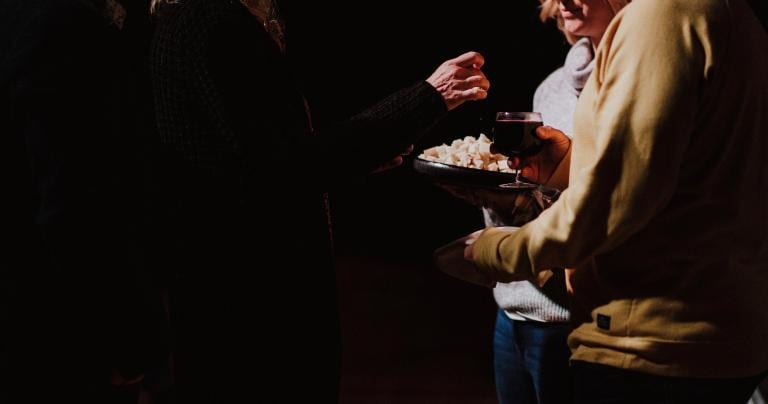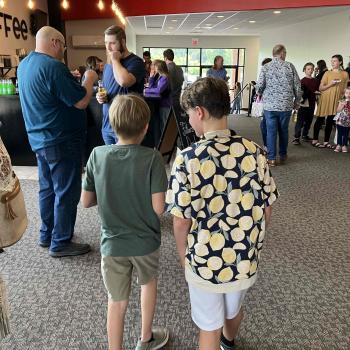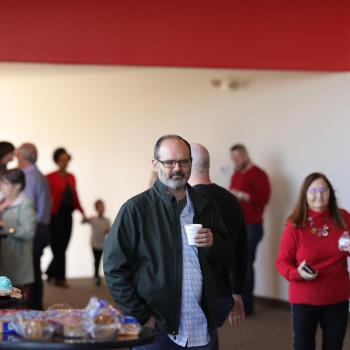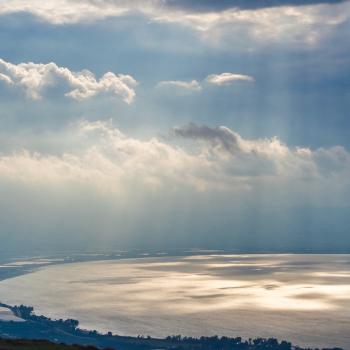
Communion, pt. 7 | The Liturgy of SS. Addai and Mari
For more on Communion in the Early Church from the Archives CLICK
So far in this series, we have been exploring Early Influences in communion, various Greek Fathers or the Primitive Church. Many of the Fathers so far are well loved by both the East and the West churches. For instance, Justin Martyr writes in Greek, but he is in the West.
Now we turn our attention to Definitive Eastern Liturgies.
Definitive Eastern Liturgies
Eucharistic texts become more accepted in the fourth century, but bishops are still free to pray as they wish until long after A.D. 350. There are various types of prayers, primarily thanksgivings in the Ante-Nicene era.
In the East a few factors influence prayer development. The East is more diverse and geographically spread out. The people are from a variety of cultures. They are neighbors with the Roman Empire in the West. But they are also neighbors with the orient and the northeastern areas that eventually become Russia.
The early church in the East has multiple religious centers, from Alexandria to Jerusalem, Antioch to Damascus, and Edessa on the frontier. Consequently some of the rites of the East develop independently.
The Liturgy of SS. Addai and Mari
An early Eastern rite is The Liturgy of SS. Addai and Mari. This liturgy stems from the far northeast church in the city of Edessa, thought to be evangelized by Thomas. “Historical tradition remembers Thomas as having traveled to Edessa and India to the east.”[1]
Edessa is a town in Mesopotamia, not far from the Euphrates, along a trade route to the East. There, multiple cultures and languages blend, including a large Jewish community.
Through this city’s direct connections with Jerusalem, it is thought the Gospel first appears in Edessa. There does not seem to be a definitive answer as to how old the church at Edessa is. It is possible, although perhaps modified with time, that this rite is handed down directly from the Apostles.
The epiklesis or prayer for the invocation of the Spirit from The Liturgy of SS. Addai and Mari, reads thus:
“And may there come, O my Lord, Thy Holy Spirit and rest upon this oblation of Thy servants, and bless and hallow it that it be to us, O my Lord, for the pardon of offenses and the remission of sins and for the great hope of resurrection from the dead and for new life in the kingdom of heaven with all those who have been well-pleasing in Thy sight.”[2]
Dom Gregory Dix says the epiklesis from The Liturgy of SS. Addai and Mari, “is hardly an epiklesis at all, in that it does not actually pray for any sort of conversion of the elements, but for something quite different, namely for the benefits of communion.”[3]
However, the prayer in The Liturgy of SS. Addai and Mari is nonetheless an invocation of the Spirit.
It is interesting that the transformation seems to be happening in the lives of believers rather than in the elements.
For more on Communion in the Early Church from the Archives CLICK
pic credit: Priscilla Du Preez | A person takes communion at a Christian church service | 11.15.18 | unsplash
notes:
- Dale T. Irvin and Scott W. Sunquist, History of the World Christian Movement, Volume I: Earliest Christianity to 1453 (Maryknoll, NY: Orbis Books, 2009), 41.
- Dom Gregory Dix, The Shape of the Liturgy, 3rd ed. (London: Bloomsbury T&T Clark, 2015), 179.
- Ibid., 183.












